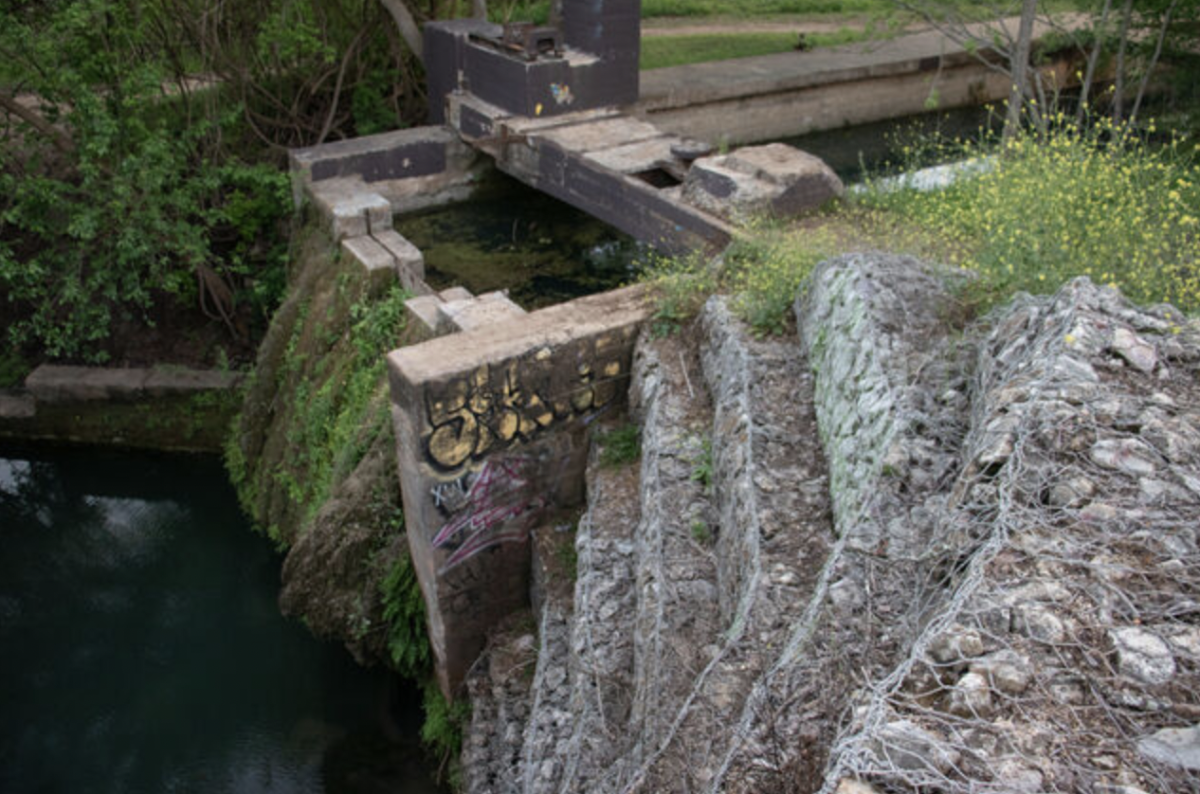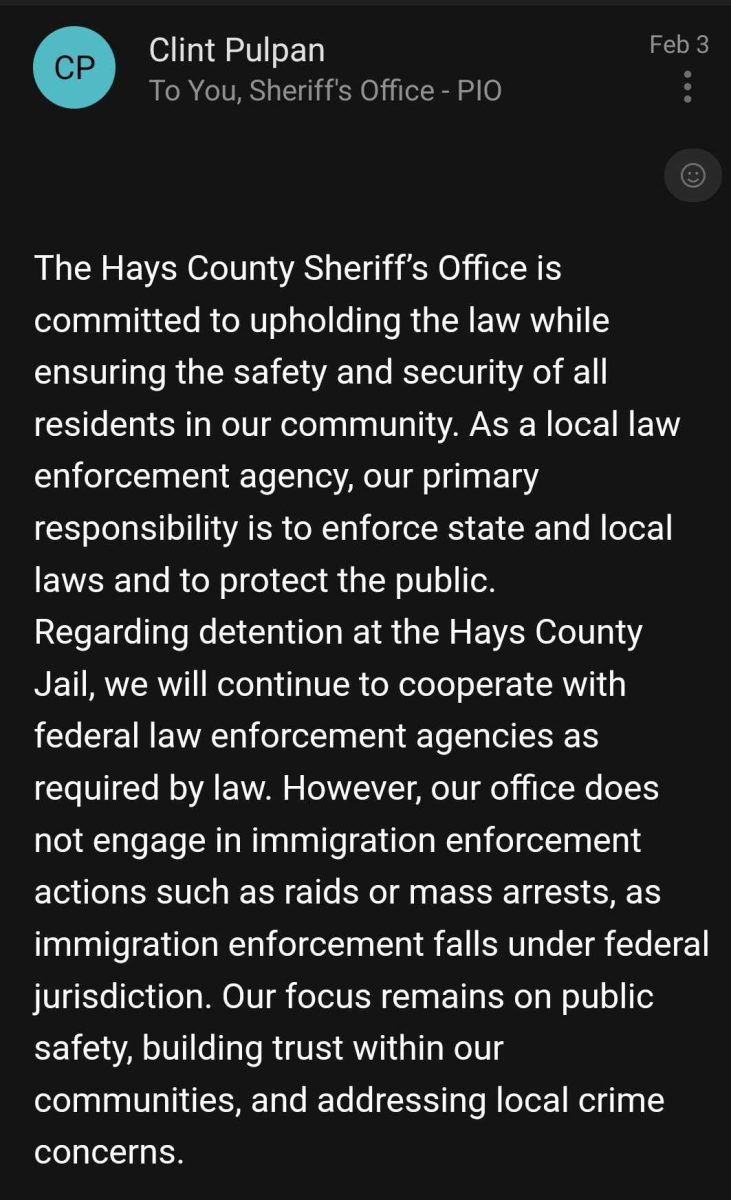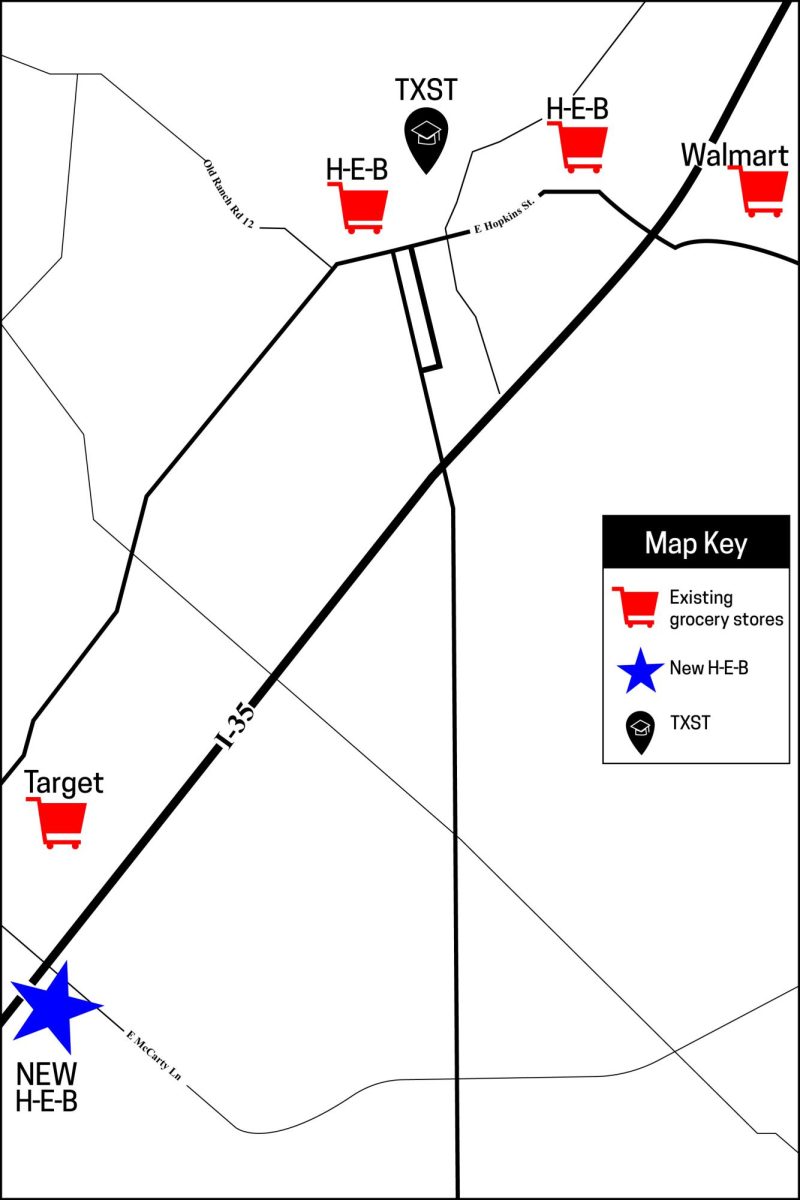San Marcos officials ruled on March 21 the death of 17-year-old Ross Webb Jr. as an accidental drowning, according to the case report released in a March 26 public records request.
Ross Webb Jr. died on Nov. 9, 2024, after getting trapped underwater for approximately two minutes near Cape’s Dam in the San Marcos River, according to the report.
Ross Webb Jr. became “stuck on something under the water” while swimming near river rapids and did not return to the surface, the police report stated.
According to Russel Wilde, San Marcos public safety communications specialist, Ross Webb Jr.’s case closed on March 21.
Jon Cradit, friend of the Webb family and San Marcos resident, said Ross Webb Jr. was out with his dad and friends at the time of the incident, hunting plecostomus, also known as suckermouth catfish, near Cape’s Dam.
“When you’re under the water like that, you may not realize exactly where you are,” Cradit said. “He was poking along the bank of the river and ended up underneath the concrete and the dam there, and when he tried to come up, he got tangled up in the wire and rebar that had been dumped there and concreted in.
When The Star requested the police incident report via public information request (PIR), San Marcos Police Department (SMPD) asked The Star to withdraw the request on Feb. 24, citing the case was still open as the autopsy report was incomplete, and also denied a partial records release.
The Star refused to withdraw the request, and instead of sending the PIR to the Attorney General’s office as specified in the Open Records Act, SMPD closed the PIR.
According to the Texas Public Information Act, in order to redact or withhold information from a public information request, the governmental entity must provide a description of the redacted or withheld information, a citation to the section of the Texas Public Information Act, and instrusctions for the requestor on how to seek a decision from the Attorney General.
“Texas’ open records law is stronger than those in many other states in that if a governmental entity wants to withhold information, it has to ask the attorney general for permission to do so,” according to the Freedom of Information Foundation of Texas’ website
SMPD Records Specialist Gavin Alley said the investigation timeline fell within standard expectations, specifically because of the autopsy.
Justice of the Peace Jo Anne Prado ordered an autopsy following Ross Webb Jr.’s death.
“Normally, when they do a death investigation, it can take anywhere from four [or] six months to a year,” Alley said on Feb. 24. “There’s no criminal investigation that we can see.”
According to the Travis County Medical Examiner’s office, autopsy reports can take 90 days or longer to complete based on the circumstances of the case.
Cradit said he believes the investigation is “not being handled responsibly or seriously” and is concerned about the build-up of hazardous materials, such as the rebar and wire, in the dam.
“People had been adding material to the dam for years,” Cradit said. “They keep trying to raise the water level there behind the dam… If someone is killed by someone else’s stupidity or doing something that they didn’t have a permit to do, they should find out who put that in there and hold them responsible.”
According to records obtained by The Star in a PIR, the city has put in numerous safety measures to attempt to improve the conditions near Cape’s Dam, particularly after the Memorial Day and All Saints Day floods of 2015, which included reinstalling PVC pipe over exposed railroad rails on Cape’s Dam that was previously installed by citizens and adding a safety rope with floats upstream of the dam to guide safe travel.
Virginia Parker, executive director of the San Marcos River Foundation (SMRF), said the city has worked to mitigate risks, including covering exposed rebar.
“The city had to go out and cover some of the rebar that was sticking out of the dam itself,” Parker said. “You can see those covers today…as the city has known about safety issues, things have been addressed.”
Parker also said low-head dams like Cape’s Dam are inherently dangerous and SMRF would like to see the dam removed.
“There have been deaths in different dams down the river for various reasons,” Parker said. “Just because it’s a low-head dam, there have always been safety concerns with that.”
In 2017, the developers of The Woods of San Marcos apartments, now the Redpoint San Marcos apartment complex, donated nearly 31 acres of land along the bank of the dam to SMRF.
While the city owns the dam and the state owns the San Marcos River, SMRF’s partial jurisdiction means the city must coordinate with the foundation when making safety-related modifications.
“If it’s safety related, like [adding] buoys or access to the property to put things on top of rebar, we would absolutely allow access for that,” Parker said
Parker said if the city moves forward with rebuilding the dam, SMRF will require the city to invoke eminent domain—the government’s power to take private property for public use in return for just compensation—and would only support the removal of the dam.
At its March 18 meeting, San Marcos City Council voted to approve a feasibility study for Cape’s Dam, which will be used to determine the decade-long debate over its removal.
Previously, the city authorized a study completed in October 2015 to investigate how the endangered species in the river would be impacted by the possible removal or rebuilding of the dam.
The new study will be completed by Freese & Nichols Inc., and it will take an estimated 10 months to complete and with a maximum operating budget of $340,000.
This is a developing story.





















